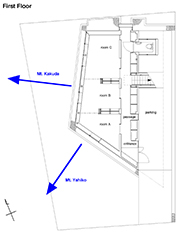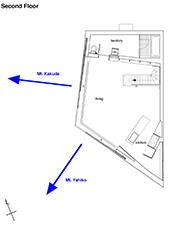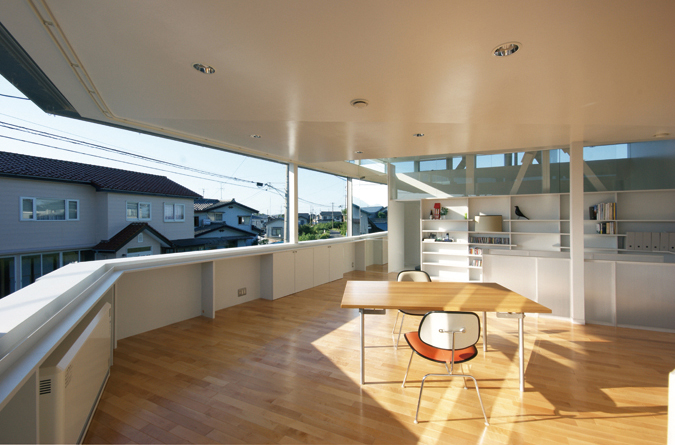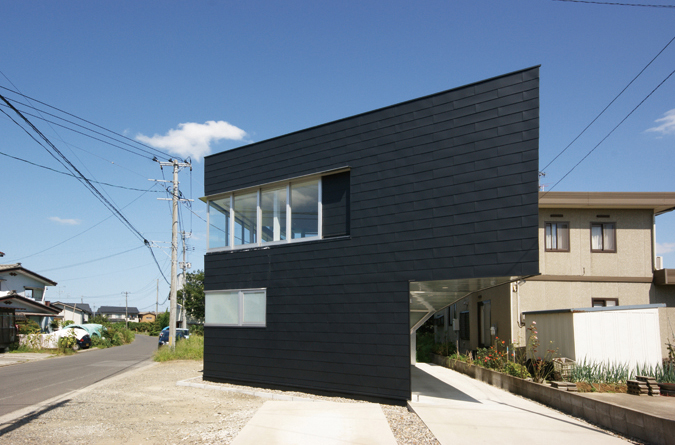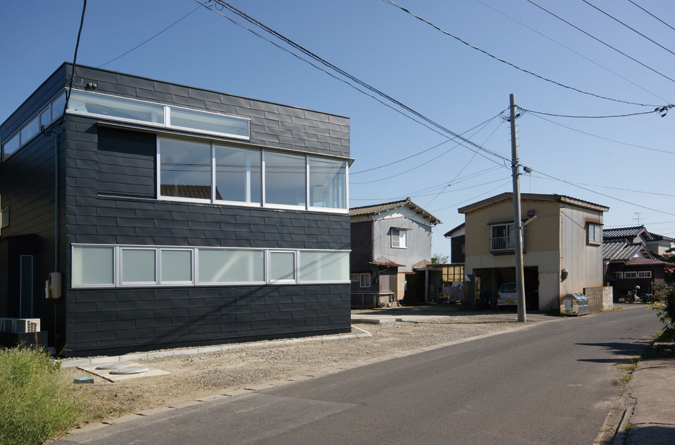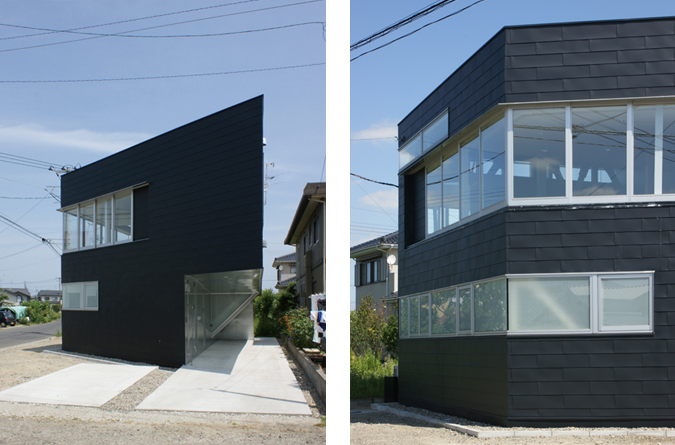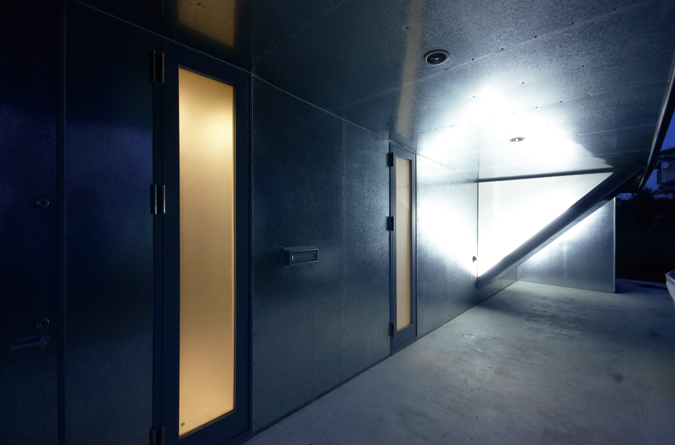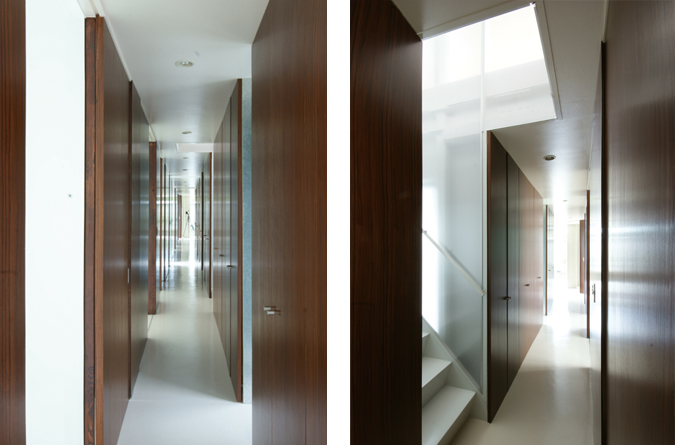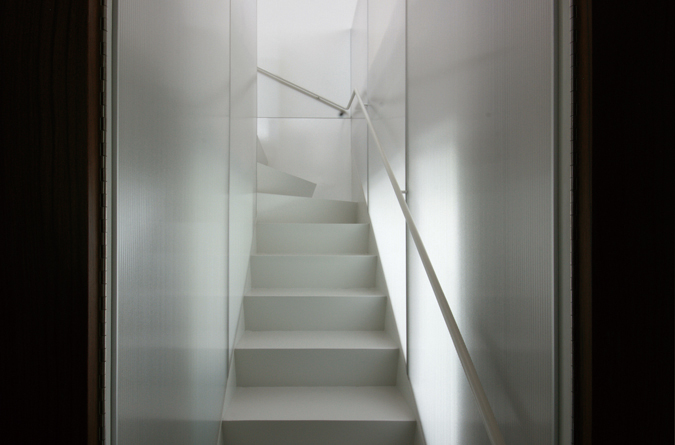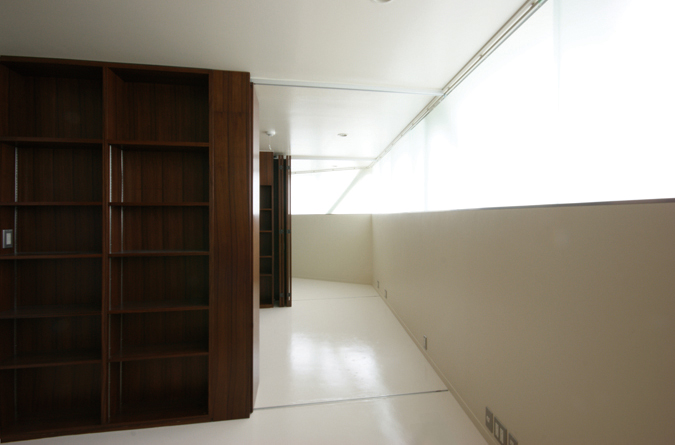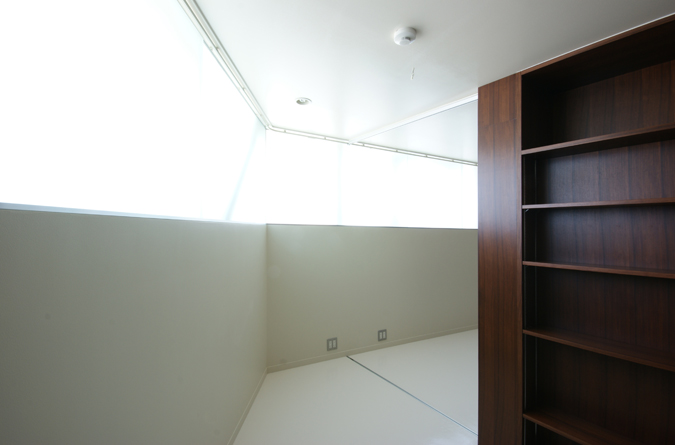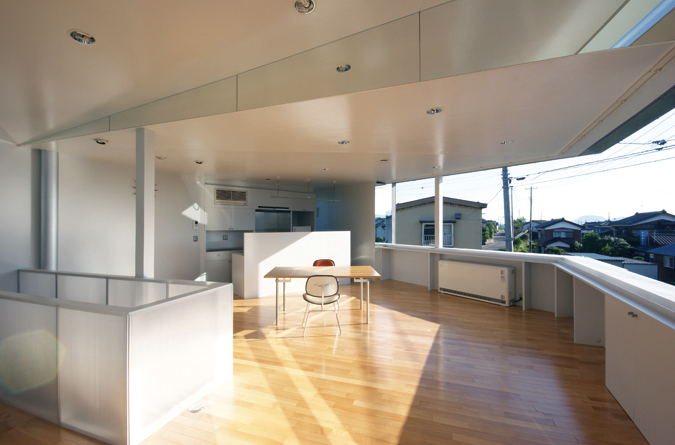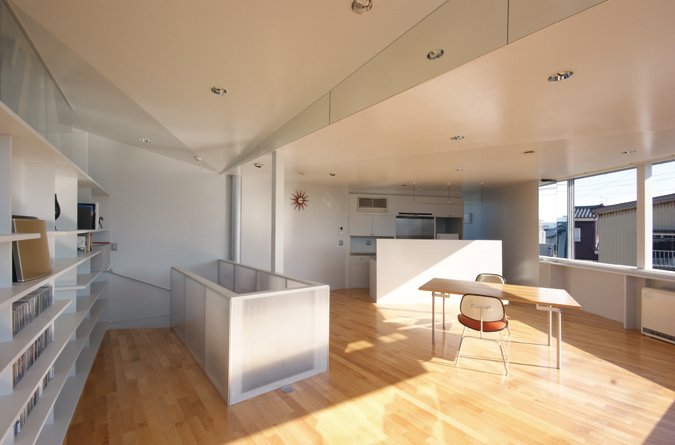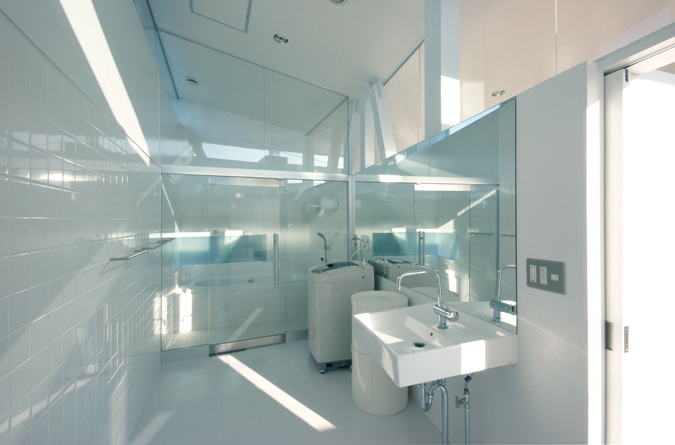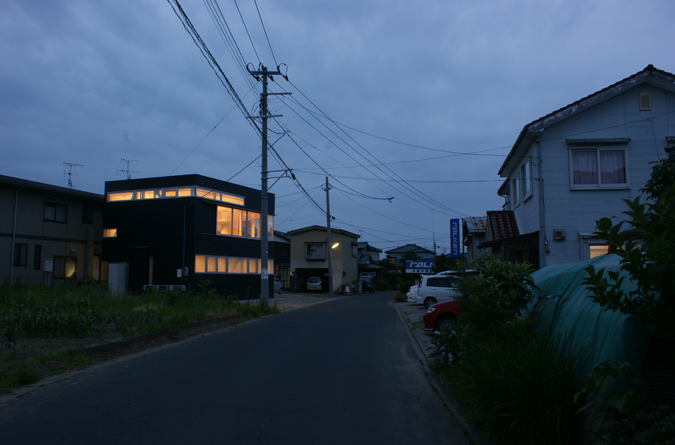© previous project next project¨
73 sq.m.
785 sq.ft.
House located on the west edge of the plains.
In this district, Mt. Yahiko and Mt. Kakuda above sea level about 600m as regional landmarks stand between plains and sea.
The client's hope for the house was that, from the window, the client saw two mountains that used to seeing from the childhood.
But, according to the investigation before designing, we found that, even at the second floor level, they could not see Mt. Kakuda due to being obstructed by the other house but see only Mt. Yahiko. There may be a possibility of disappearing the view of Mt. Yahiko when a new house stood in the future.
Although two mountains' view from the house will disappear, those will keep being the important identity for this site and the existence that suggests the wider world over the narrow space of the site. So, we designed this house as a compass that always considered the existence of two mountains while living.
Two focuses
The front sides of the exterior wall are composed of two diagonal sides irrelevant with the angle of the site. One is an orthogonalization side of the axis toward the Mt. Yahiko from the center of the house, and another toward Mt. Kakuda.
If the change in the future is assumed, the large windows realize not "Scenery of the mountain" but "Hint of the mountain" as the prototype in the region that keeps existing without greatly changing even if the surroundings are changed. And, here comes in the place where the two mountains intersect, too.
"The first floor that was enlarged " and "The second floor that was shortened"
On the first floor, both ends of the long passage were finished with the mirror. According to the effect of the mirror, the depth of the passage was enlarged far longer than an actual distance.
Bright light was put from the glass window of both sides, so the high illuminance was realized. While, the difference of the luminance between the
bright light and the Andean Rose wood board emphasizes the darkness of the Andean Rose wood board. It was because the difference of the space between the first floor and the second floor was made larger.
The second floor is a space that opens radially toward two orthogonalization sides. The wall and furniture are radially arranged, and the ceiling has an upward inclination from the inner toward the window. According to the reverse-perspective, the depth of the second floor was shortened and they feel the outer environment closer. It makes more conscious of the orthogonalization side and "Hint of the mountain" .
Two orthogonalization sides with obtuse angle generated the effect that the interior entered in the outer environment. At the same time, according to thrusting out to the town with the obtuse angle, this architecture considered becoming a small landmark for an average town that was lack of the vigor.
Location : Nigata-city, Nigata, Japan
Architect : Daigo Ishii + Future-scape Architects
Structure Engineer : Oga Structure Design Office
Mechanical Engineer : Mai Mechanical Design Office
Cooperation : Hiroyuki Kato, Rieko Tanaka, Arata Tamura, Apartment
Furniture : Apartment, Tendo PLY
Construction : Nigata Prefabrication Company
